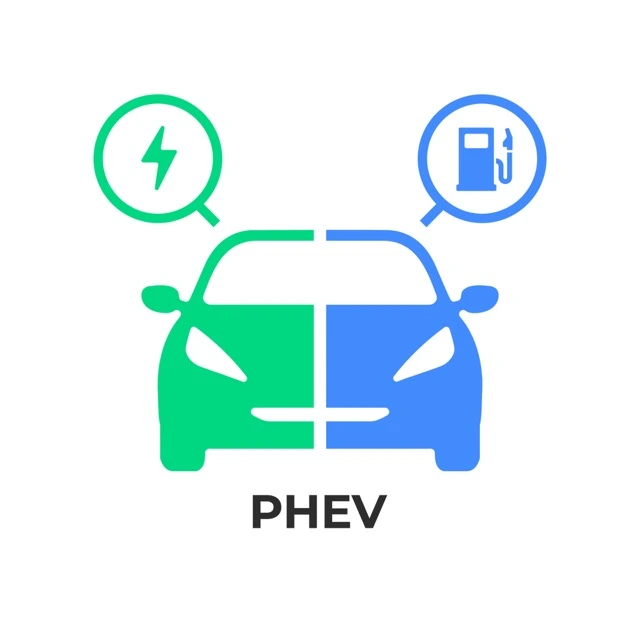Plug-in Hybrid Electric Vehicles (PHEV’s) have gained significant popularity in Australia due to their ability to combine the benefits of both petroleum and electric powertrains. In 2023, 738000 PHEV models were sold, a massive 472% rise from 2020. One crucial aspect of owning a plug-in hybrid car is understanding how to charge it effectively. This blog post will cover the process of charging a PHEV, the best EV chargers to accompany this process, and essential tips for new PHEV owners.
Understanding Plug-In Hybrid Electric Vehicle
Before delving into charging, let’s briefly understand how PHEVs work. These vehicles have a petroleum-powered engine and an electric motor, allowing them to operate in electric-only mode for shorter trips and switch to petroleum when needed. This dual power source reduces emissions and enhances fuel efficiency. With PHEVs, charging can be done using compatible EV chargers (hence why they are referred to as ‘plug in’), making them unique from hybrid cars (which use petroleum-powered engines to recharge the electric battery).
Charging a Plug-In Hybrid
- Home Charging: Most plug-in hybrid owners charge their vehicles at home using a standard electrical outlet. Owners are able to use the Level 1 charger (Trickle Charging Cable) that came with the EV, although this type of charging unit is not powerful enough to fully charge an EV’s battery overnight. For this reason, Most EV owners consider installing a Level 2 home charger (AC Home charger) for more effective and faster charging sessions.
- Portable EV charging: Portable EV chargers make the PHEV journey more convenient. These chargers are a bit faster compared to TCL chargers and cheaper compared to home EV chargers. They are widely popular among owners who like to travel, or regularly commute to long journeys.
- Public Charging Stations: Public charging stations are widely available, making it convenient for plug-in hybrid owners to charge on the go. These stations offer Level 2 and Level 3 (DC fast charging) options. Please note PHEV models are non compatible, nor recommended for use with DC fast charging (Level 3), for this reason PHEV owners may consider using the AC chargers (Level 2) when using these stations.
- Charging Times: Charging times vary depending on the battery size, onboard charging limit and charger type. Level 1 chargers are the slowest and may be able to provide a full charge overnight in various models. Level 2 Home EV chargers however are faster, and more efficient at fully charging your plug-in hybrid in a few hours rather than overnight.
Best EV Chargers for Plugin Hybrid Electric Vehicles
Most PHEV owners use the TCL charging cable, given to them with the vehicle at the time of purchase. The TCL charging cables are extremely slow and are unable to fully charge the vehicle in a matter of a few hours. Luckily, there are many charging options available for PHEV owners to conveniently charge. One of which is the AC home charging units. They are a faster, more reliable, and convenient way to charge a PHEV. This is because they are able to use 240V power outlets (for quicker charging to take place). Installing a home EV charger also makes your investment future-proof. Here are some of the top-rated EV chargers for your PHEV:
- Smart Mini EV Wallbox Charger | 7.4KW Wifi Enabled
- Smart Mini PRO EV Charging station | 7.4KW Socket
- Smart Mini PRO EV Charging station | 7.4KW Tethered
- Pulsar plus wallbox ev charger | 7.4KW Tethered
- Portable EV Charger | Single Phase 10Amp
Note: You should consider several factors when selecting your PHEV’s home charger. Get in touch with our experts at EV Powerhouse to help guide you in making the most suitable choice for your lifestyle needs.
EV Powerhouse also recommends taking a look at the Home charging guide before PHEV owners purchase a charging unit. For a more comparative view of EVPowerhouse’s advertised charging units, feel free to use our comparison EV charging station tools.
PHEV Charging Tips
Plan Charging: Plan your charging based on your daily commute. If you mostly drive short distances, you may not need to charge every day.
Use Off-Peak Hours: Charging during off-peak hours can be cheaper and reduce strain on the electrical grid.
Maintain Battery Health: Avoid regularly depleting your battery to its lowest capacity, as this can reduce its long-term lifespan. EV Powerhouse recommends keeping your PHEV battery between 20% – 80% charged at any given time for optimal performance and battery care.
Utilize Regenerative Braking: Many plug-in hybrids have regenerative braking systems that recharge the battery while driving, increasing efficiency.
Conclusion
Charging a plug-in hybrid car is a straightforward process, and with the right planning and knowledge, you can make the most of your vehicle’s electric capabilities. Whether you charge at home or use public charging stations, understanding the charging options available to you is essential for enjoying the benefits of a plug-in hybrid electric vehicle whilst making sure it receives the right battery care.
Check out the Top 5 Popular Plugin Hybrid Electric Vehicles in Australia.

